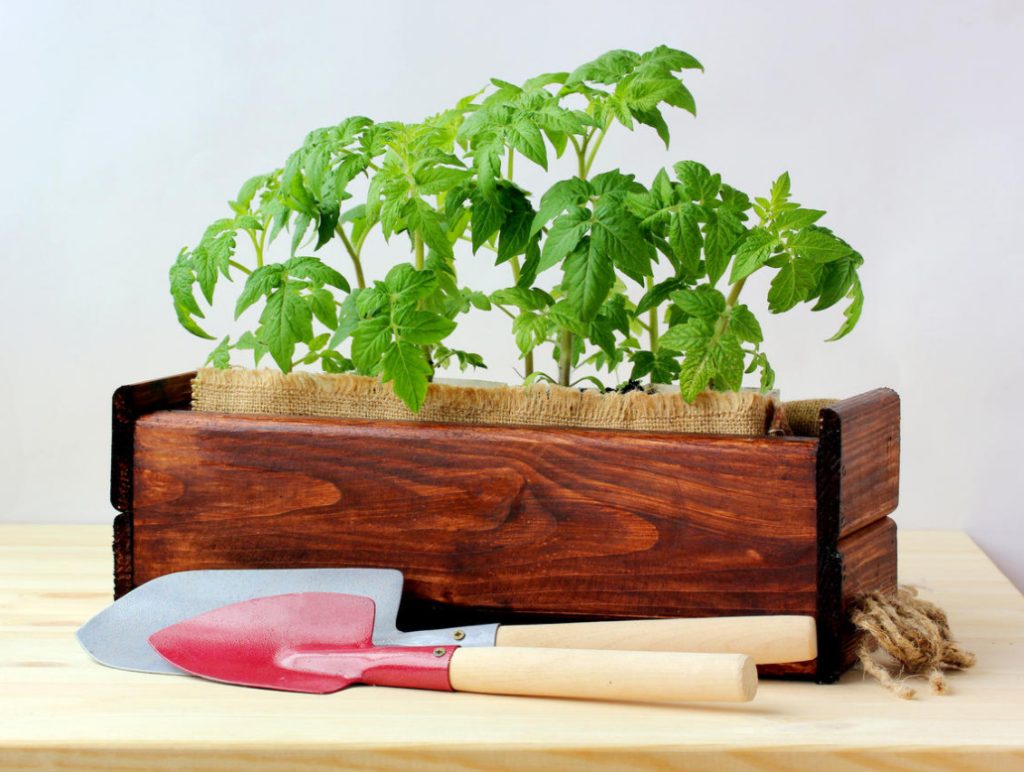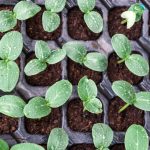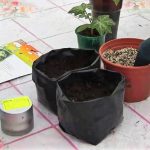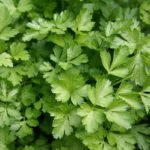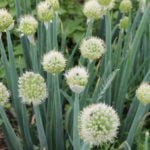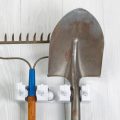Growing tomatoes is an exciting process. But if you buy seedlings on the way to the dacha, then you will not fully know the taste of victory (harvest). Nurturing your own planting material is much more reliable and cheaper.
When growing tomatoes, it is necessary to make their roots grow deep into the soil, and not spread out all over the area, because in the depths they will always find both food and moisture. In the surface layer, they become dependents and depend on the mercy of the owner. In addition, at an early age, the seedlings need to be placed in a stressful situation, so that the plants fight for their survival on this earth and strive to leave offspring — seeds faster (and at the same time we will get a harvest of tomatoes earlier).
Tomato sowing
Sow the seeds 70 days before planting the seedlings in a permanent place — it is not worth it earlier. After about 10 days, seedlings will appear. Immediately start watering not with water, but with a weak solution of mineral fertilizers. Nitrogen from top dressing should be excluded if possible, and potassium and especially phosphorus should be given necessarily. Nitrogen helps to pull the seedlings, and phosphorus slows down this process. In addition, you need good lighting, but not around the clock, but 12-hour.
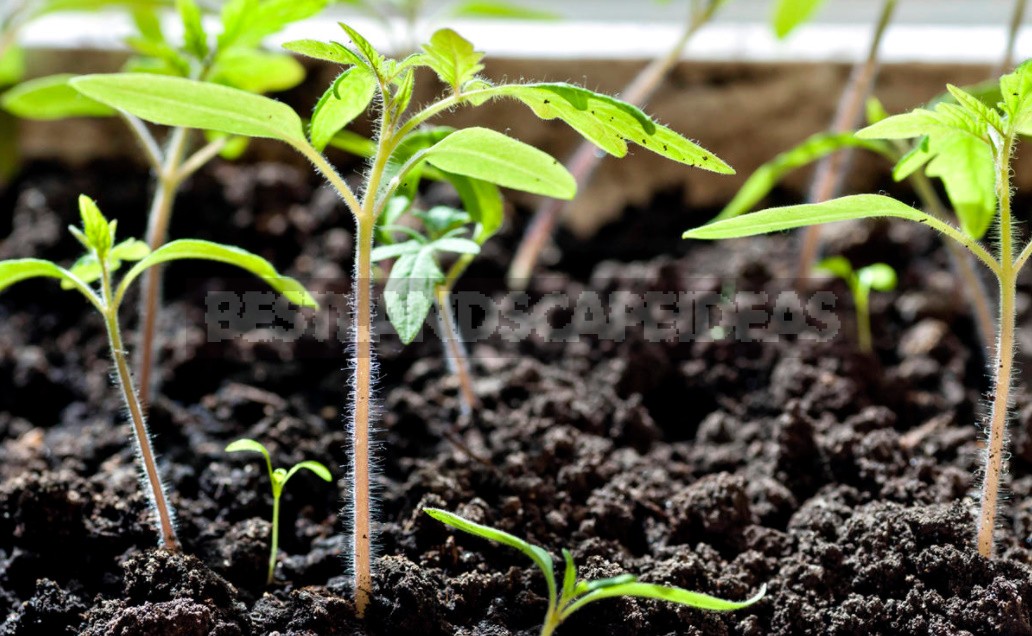
Pick-me-up
At the first pick, in any case, do not break off the lower part of the root, contrary to all advice. The tip of each root has a “nose” for water and food, and therefore will grow purposefully. The advice to shorten the root is given so that it begins to branch, that is, in the future, it begins to rummage around in search of food and drink. And that’s what we don’t need — let it grow down.
Diapers for seedlings
To preserve the roots growing down, as well as to create the most stressful situation, the first transplanting of seedlings (picking) should be done in diapers made of film. To do this, cut from a new or old sufficiently dense film left over from the greenhouses, the so-called diapers the size of a notebook sheet. They will serve you for many years. After use, they just need to be washed, dried and folded until next year in a suitable box, they will not take up much space.
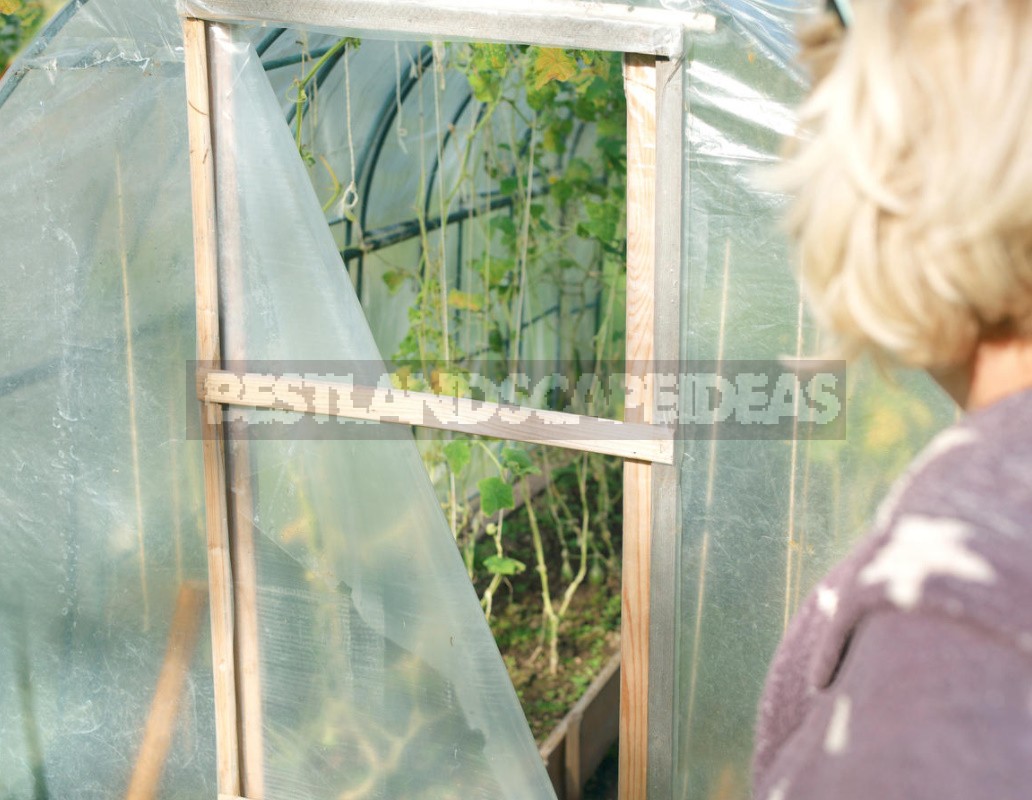
On the upper left corner of the diaper, stick a piece of adhesive plaster (a roll bought at the pharmacy will last you for life). On it, write the name of the variety or just the number, and in the notebook, record the name of the variety under this number. Now turn the film over with the other side so that the sticker remains in the upper right corner, only on the other side.
Pick-up technology
On the upper left part of the diaper, pour 1 tablespoon of prepared and moistened soil for seedlings, carefully transfer the seedling to it (remove it with a tablespoon). Top with another 1 tablespoon of soil. Cotyledon leaves should be at the very edge, and above — 2-3 real ones. Bend the lower edge of the film as the baby is swaddled (leaving some freedom to the legs), and, holding the soil with the seedling with your hand, begin to roll the cylinder, rolling it to the right. Put on 2 rubber bands and make all the rolls of seedlings tightly together in a container of such size that the plants can stand upright.
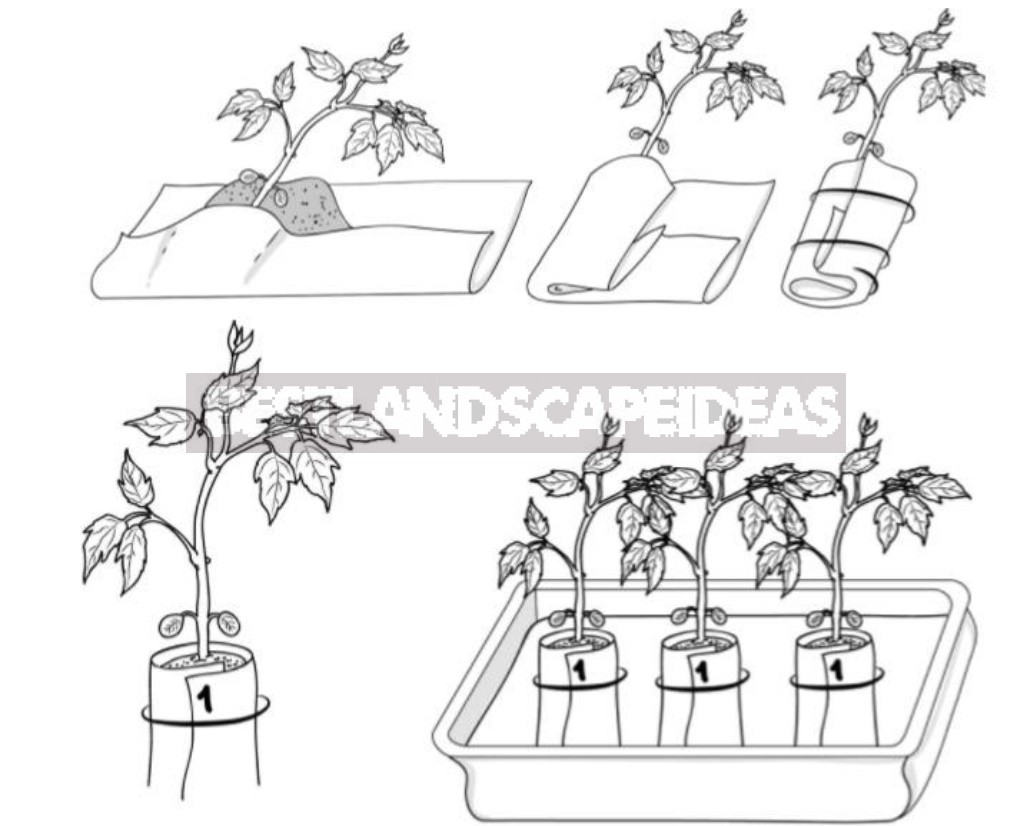
When the seedlings have 4-5 real leaves, unfold the diapers, add another 1 tablespoon of soil under the roots and wrap it again, but without bending the lower edge. Put on the rubber bands and, holding the soil from the bottom so that it does not fall out, again make up the rolls in the container.
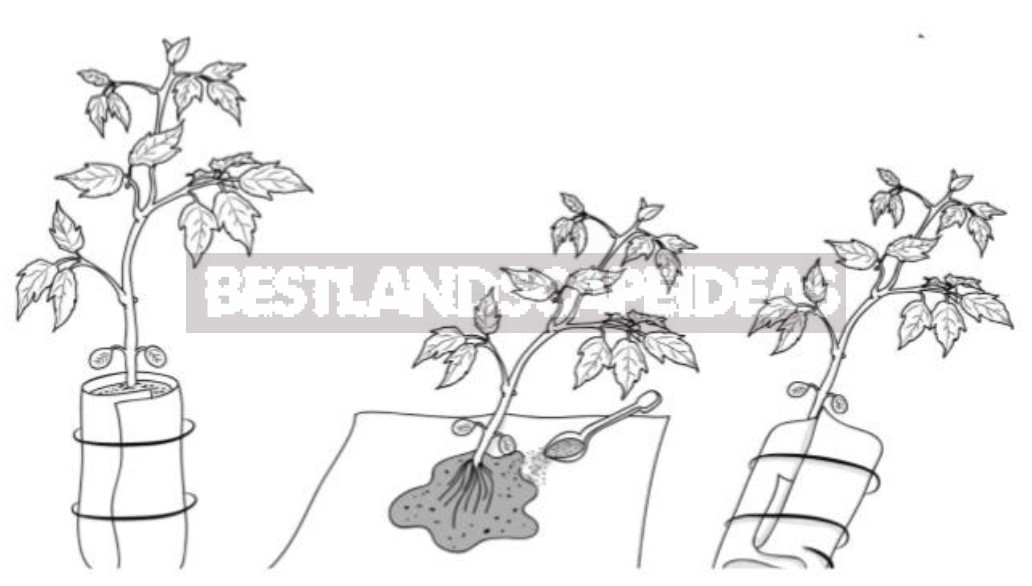
Watering
Watering seedlings should be very moderate — and not with water, but with a weak solution of mineral fertilizer. It is more comfortable and better to use liquid preparations (only not organic!), which have a good composition. Any suitable for indoor flowers. Watering is more convenient to do with a teapot, combining with a weak top dressing.
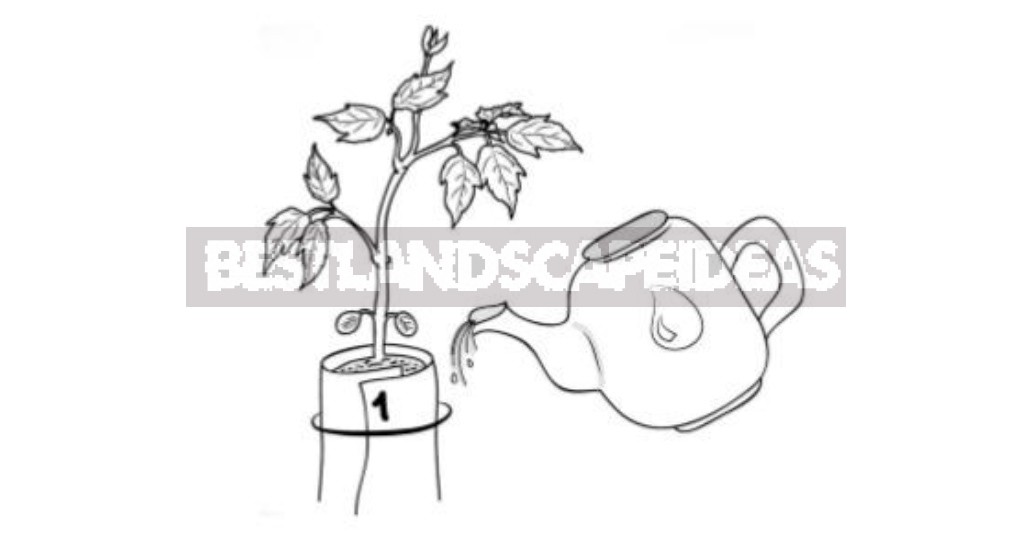
Before transportation to the site, do not water for 2-3 days. Seedlings will slightly wither — this is not terrible, but it will not be fragile and will not break during transportation. Roll each roll of seedlings into a newspaper and put it in a box with a jack. So you will move it.
If you plant it immediately, you can not water it on arrival. And if in a few days, then, of course, after the transportation of the newspaper should be removed, and the seedlings should be placed vertically in the container and watered. The day before planting seedlings, well pour the soil with the appropriate solution to disinfect the soil, and at the same time make organic nutrition.
Planting seedlings
Make holes of such depth that the roll falls into it with a margin, according to the scheme of about 35 × 35 cm. If you have an old feather pillow, then pour about 2-3 cm of the feather on the bottom (you can replace it with dry hay). Then add 1 tablespoon of superphosphate (you can replace 2 tablespoons of ash), 0.5 teaspoons of the powder fraction of fertilizer (if it is not present, then 1 teaspoon of ash). Gradually pour 5 liters of warm water into each well for high tomatoes or 3 liters for low tomatoes. That much, no less.
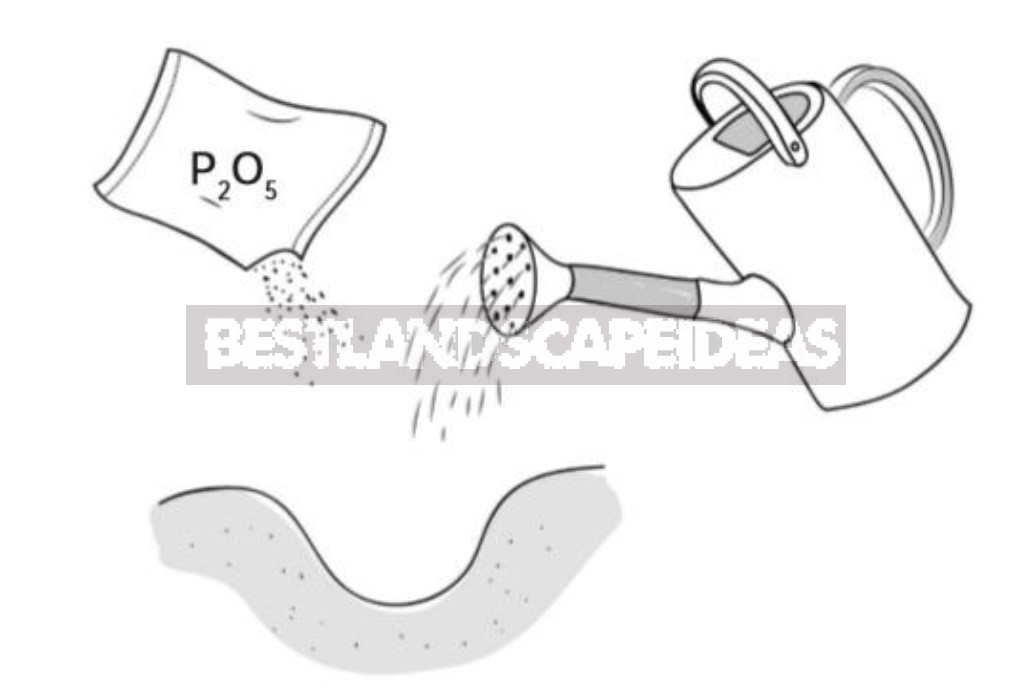
After the water is absorbed into the soil, remove the rubber bands, put the rolls in the holes and pull out the diapers. Add the soil around the seedling and then be sure to mulch it! As a mulch, you can take grass mown from lawns, sand, peat or black-and-white newspapers. This will not allow the moisture to evaporate, and it will go down, and the roots will go down after it. With this planting, you will not water the tomatoes once during the entire summer. Not once!
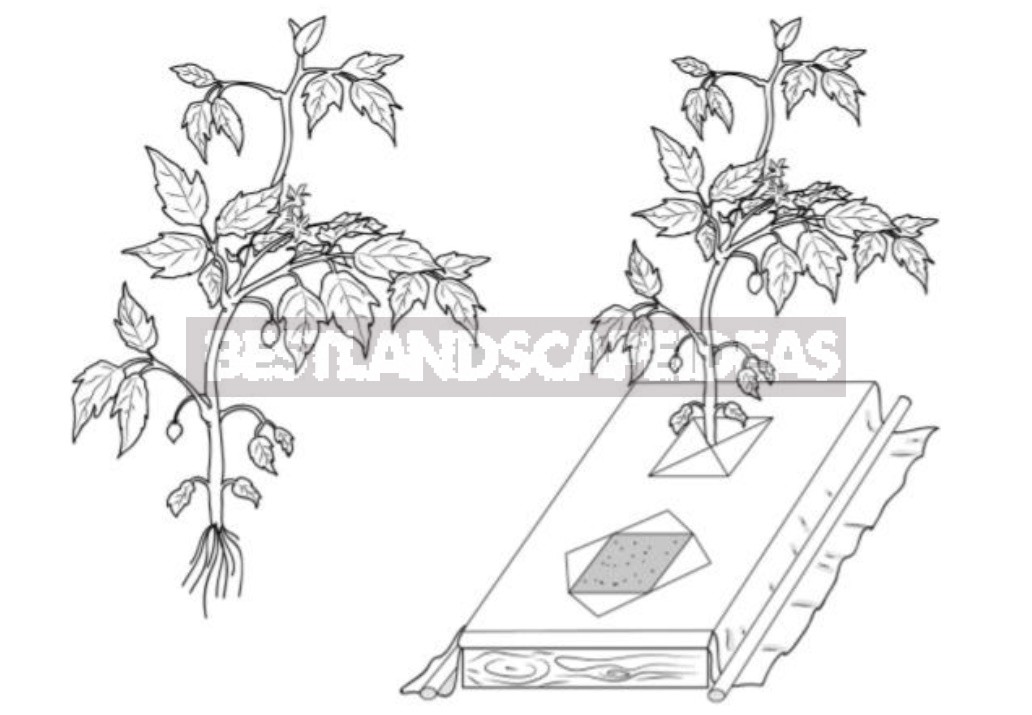
Before transplanting seedlings to a permanent place, it is not necessary to harden it, but immediately after planting, you need to spray the leaves with a nutritious cocktail. This spraying should be repeated monthly. And nothing else to do — no feeding, no watering, no loosening, no weeding-all summer. It is enough to remove the stepsons in a timely manner, until they have grown more than 4-5 cm, and the leaves that are located below each knotted brush. This is a must-do.
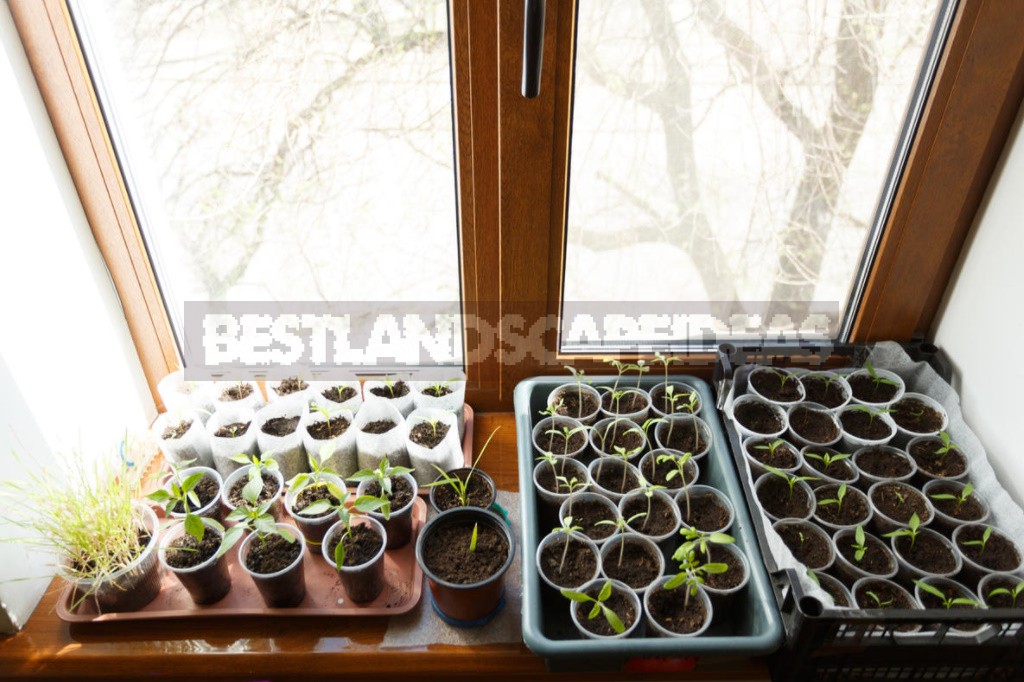
As you can see, the technology of growing tomato seedlings can be quite simple and economical, so that any gardener can cope. As a result, you will get exactly the tomatoes you want, and not a pig in a poke.
